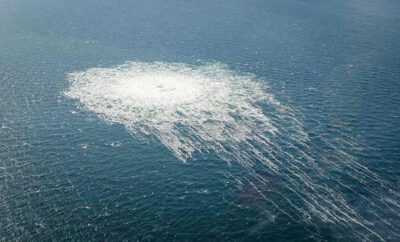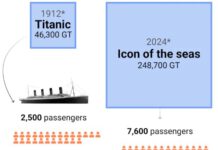
Coalition Clean Baltic expresses serious concerns regarding factual massive release of greenhouse gas and other possible environmental consequences of the natural gas leakages that were detected by Danish and Swedish authorities from the Nord Stream 1 and 2 pipelines on 27-28 September 2022.
With the information available at this point and risk assessment from EIA Reports of both pipelines, presented under the Espoo Convention consultations, the full volume of gas, being contained in the damaged pipelines may be released into marine environment and atmosphere.
In the worst case scenario, given pipeline dimensions in the project description (internal diameter 1,153 mm, length 1,220 km) the volume of one pipeline can be calculated as 1.27 million m3. At the settle out pressure of 165 bar, there will be the equivalent of 210 million m3 (at atmospheric pressure) or around 148,000 tons of gas in one enclosed pipeline. According to the EIA, the consequent environmental impacts can occur following the release of gas:
- Emission of greenhouse gases to the atmosphere:
Methane, equivalent to the release of 3.7 million tons of CO2 in terms of climate change potential - Impacts on water quality:
Natural gas exhibits negligible solubility in water, and thus has little effect on water quality in the event of an underwater leak. The gas will rise to the water surface, from where it will be released into the atmosphere; the extent to which it dissipates depends on meteorological conditions and the weight of the gas in relation to the surrounding air. A short thermal impact (temperature drop to negative value caused by gas expansion, or Joule Thomson effect) may occur in the surrounding water. Another possible impact on water quality from an accidental pipeline rupture and gas release is a possible updraft of bottom water. This could cause bottom water to be mixed with surface water, with an impact on salinity, temperature and oxygen conditions. - Impacts on fish, marine mammals and birds:
All marine organisms (benthic fauna, fish, marine mammals and birds) within the gas plume or the subsequent gas cloud will die or flee from the influenced area, which subsequently could impact the designation basis of protected areas (including Natura 2000 sites). The impact will be of limited time and space.
read more www.ccb.se/ccb-position-on-gas-leaks-from-nord-stream-1-and-2










